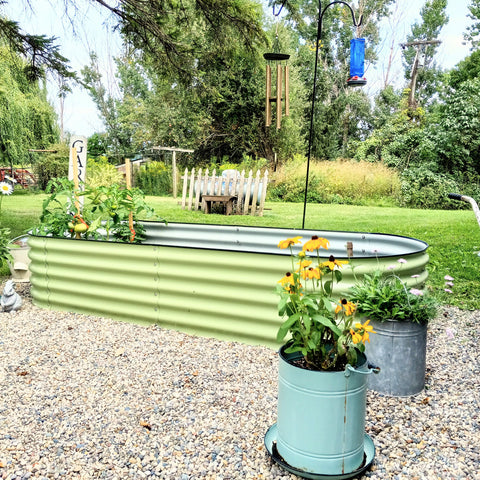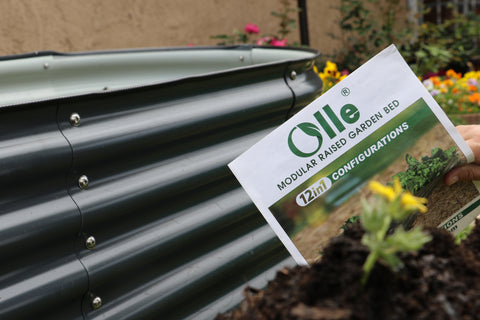Tips from Olle Garden Bed: How to Plant Vegetables Outdoors in Winter
As winter approaches, you may turn to other ways of growing vegetables, such as in greenhouses or even indoors. While these methods are convenient, they do not always provide enough space for all the vegetables you want to grow. The following content also has some reference value for raised garden beds.
Having said that, there are several ways to continue growing vegetables outdoors in winter gardens. Some vegetables thrive in cool weather, while others do not, so this distinction is necessary. You can use the right tools and expertise to enjoy delicious crops and garden space all year round.

Learn what vegetables you can grow in your winter garden, what tools you need, and how to ensure that your plants are happy and healthy when they are ripe
Tools you need
To grow vegetables correctly in winter, you need several different tools. These are the key points:
Gardening Glove
Trowel
Hardy vegetable
Protective covers such as landscape fabrics
Fertilizer
High quality soil
Watering hose or can
Collection basket
Cover
How to plant vegetables outdoors in winter
Growing vegetables outdoors in winter is especially beneficial, but before you can enjoy these crisp vegetables, you need to take some steps.
Step 1: Select the right variety
The first and most important step in growing vegetables in winter gardens is to choose the right varieties. You need to consider the temperature in your area and which options are resistant to these conditions. There are several different hardy vegetables that tend to perform well in winter.
Green leafy vegetables, such as spinach, arugula and parsley, can withstand cold weather and frost. The same is true of root vegetables, including carrots, beets and radishes. Broccoli, cabbage and brussels sprouts are also excellent choices.
Professional tips: Avoid planting after the first frost, because plants do not have enough time to develop strong roots. To determine the correct date, consider the time required for plants to mature and count backwards from the predicted frost date. If you are late in the season, transplant seedlings!
Step 2: Planting and protecting vegetables
Before planting, it is important to determine the ideal location for planting crops. Choose a sunny place in the garden and use water. Consider the use of well drained, good quality soil to prepare elevated garden beds. Elevated garden beds can keep the soil warm more than planting directly underground. Remember to modify the soil and apply fertilizer before planting autumn and winter crops.
Once the vegetables are underground and the first frost is coming, it's time to protect your crops. To do this, put some kind of row cover, fabric, cold rack or protective plastic protective cover on the crops. You can also install bales of straw around the structure as an additional insulating material. In addition, a 3-inch covering placed on the soil should provide insulation as a form of moisture retention.
Remove the cover during the day when the temperature is above 50 degrees Fahrenheit. This ensures that plants get as much light as they need. The amount of light a vegetable needs depends on how much light you have in the field.
Step 3: General maintenance
Although it seems challenging to water when the temperature is below freezing point, the survival and growth of plants are crucial. The insulation you provide by protecting plants should ensure that the soil does not freeze.
When watering, please follow the general watering rules for outdoor plants. Notice the weather, how much sunlight plants get, and how wet the soil is. In order to help your plants spend more, please thoroughly water your garden before frost; Moist soil can better keep heat and help your vegetables get through the cold temperatures.
Step 4: Harvest
How and when you harvest your crops depends on the type of vegetables you grow. Check your vegetables regularly to make sure they are collected before they decay. The best time of day to harvest is in the morning before the sun gets too hot to keep the vegetables fresh and delicious.
Knowing the number of days expected to expire is a good start. But here's a key tip: Many root vegetables, brassica and green leafy vegetables can be harvested once they reach usable size. Note the expected size indicated on the seed pack.

Note: If you live in a cool climate, you can also plant vegetables in winter and harvest them in spring. This means that plants are allowed to live in a vegetative state under a layer of insulation (including covering and snow). Once the weather is warm and the snow melts, the vegetables should be ripe and ready to harvest.
Grow up!
This winter, maximize your gardening ability by growing vegetables outdoors. You can put tomato plants, herbs and fruits on the greenhouse or indoor windowsill, but plant green leafy vegetables, root vegetables and brassica plants on the protected garden bed in the backyard.
